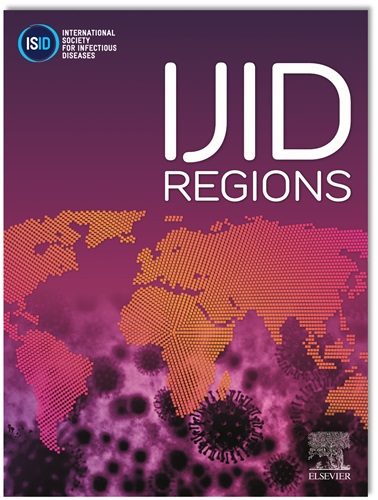根据监测数据中病例数的变化估计传播异质性和病例确定
IF 4.8
2区 医学
Q1 INFECTIOUS DISEASES
引用次数: 0
摘要
在监测数据中报告的传染病病例数通常显示出相当大的差异。这种变化是过程和观测噪声的结果。过程噪声源于个体水平上传播的随机因素,即继发性病例的过度分散。观测噪声是由测试吸收的变化和采样误差引起的。我们的目标是更好地理解过程和观察噪声如何影响监测数据中传染病病例数的观察变化。方法建立了传染病病例监测数据生成过程的机制模型,该模型考虑了个体病例的负二项子代分布和观测过程的二项抽样误差。我们使用SARS-CoV-2传播和病例确定的随机模拟数据验证了该模型。最后,我们将该模型应用于瑞士的SARS-CoV-2监测数据。结果假设观测概率恒定,我们发现监测数据中的日报告病例数预计遵循准泊松分布。报告病例的过分散度是期望病例数、有效再现数、继发病例k的过分散度和观察概率的函数。利用模拟数据,我们发现当观测概率已知时,可以估计次要情况下的过色散,反之亦然。我们用2020年至2022年瑞士SARS-CoV-2疫情的数据说明了这一特性。利用先前对继发性病例过度分散的估计,我们能够估计和跟踪SARS-CoV-2随时间的观测概率的上限。我们展示了个体传播水平的过程噪声和观测噪声如何导致监测数据中观察到的传染病病例数的变化。结论该模型具有从常规监测数据连续监测各种传染病传播异质性或病例确定的潜力。本文章由计算机程序翻译,如有差异,请以英文原文为准。
Estimating transmission heterogeneity and case ascertainment from variations in case counts in surveillance data
Introduction
The reported numbers of infectious disease case counts in surveillance data typically show considerable variation. This variation is a result of the process and observation noise. The process noise stems from the stochastic element of transmission at the individual level, i.e., the overdispersion of secondary cases. The observation noise results from variations in testing uptake and the sampling error. Our objective was to better understand how the process and observation noise shape the observed variation in infectious disease case counts in surveillance data.
Methods
We derived a mechanistic model of the data generating process of infectious disease case counts in surveillance data that incorporates a negative binomial offspring distribution for individual cases and the binomial sampling error from the observation process. We validated the model using data from stochastic simulations of SARS-CoV-2 transmission and case ascertainment. Finally, we applied the model to SARS-CoV-2 surveillance data from Switzerland.
Results
Assuming a constant observation probability, we showed that the daily numbers of reported cases in surveillance data are expected to follow a quasi Poisson distribution. The overdispersion in reported cases is a function of the expected number of cases, the effective reproduction number, the overdispersion in secondary cases k, and the observation probability. Using simulated data, we found that one can estimate the overdispersion in secondary cases when the observation probability is known, or vice versa. We illustrated this property with data from the SARS-CoV-2 epidemic in Switzerland from 2020 to 2022. Using previous estimates for the overdispersion in secondary cases, we were able to estimate and track the upper bound of the observation probability of SARS-CoV-2 over time.
Discussion
We showed how the process noise at the individual level of transmission and the observation noise result in the observed variation in infectious disease case counts in surveillance data.
Conclusion
Our model has the potential to continuously monitor either the transmission heterogeneity or the case ascertainment for various infectious diseases from routine surveillance data.
求助全文
通过发布文献求助,成功后即可免费获取论文全文。
去求助
来源期刊
CiteScore
18.90
自引率
2.40%
发文量
1020
审稿时长
30 days
期刊介绍:
International Journal of Infectious Diseases (IJID)
Publisher: International Society for Infectious Diseases
Publication Frequency: Monthly
Type: Peer-reviewed, Open Access
Scope:
Publishes original clinical and laboratory-based research.
Reports clinical trials, reviews, and some case reports.
Focuses on epidemiology, clinical diagnosis, treatment, and control of infectious diseases.
Emphasizes diseases common in under-resourced countries.

 求助内容:
求助内容: 应助结果提醒方式:
应助结果提醒方式:


